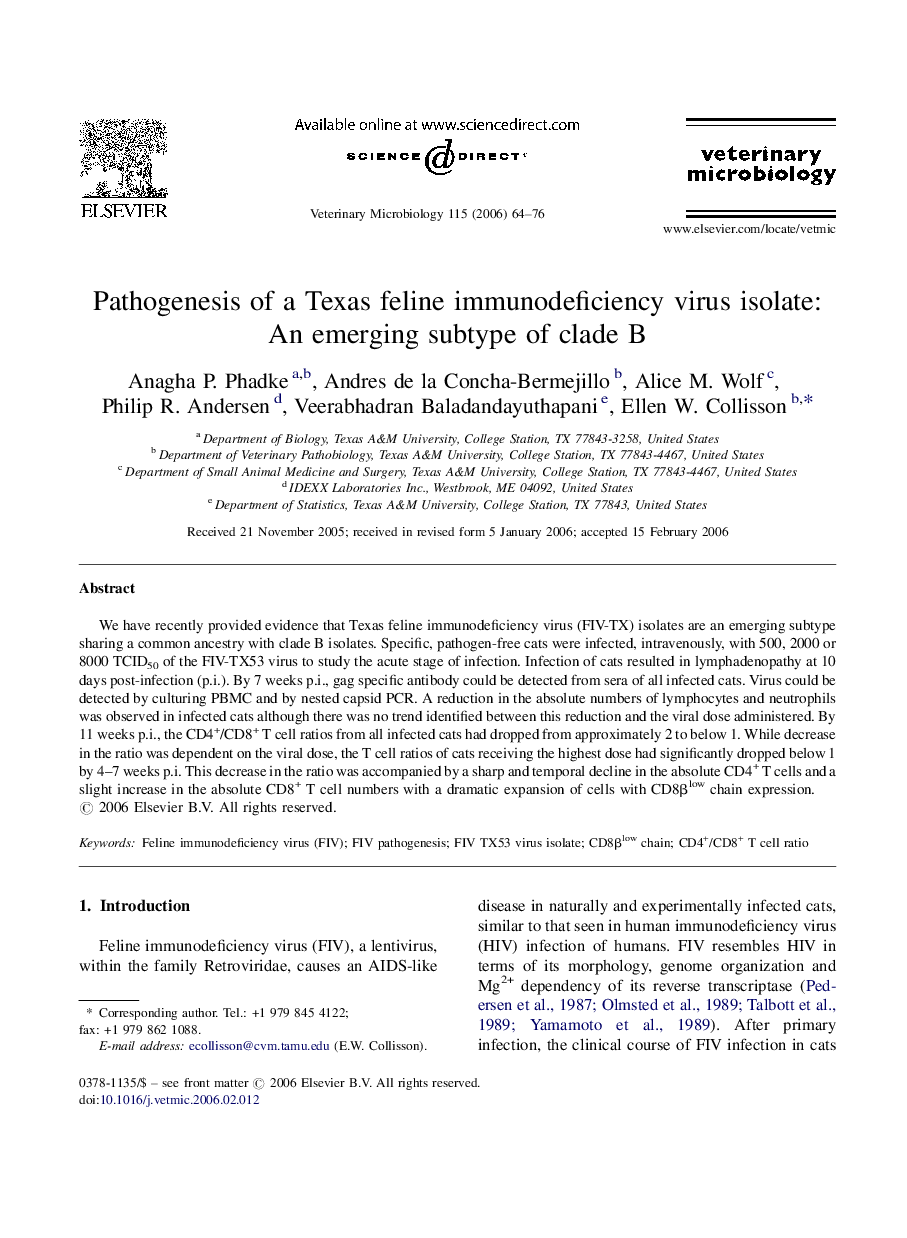| Article ID | Journal | Published Year | Pages | File Type |
|---|---|---|---|---|
| 2469695 | Veterinary Microbiology | 2006 | 13 Pages |
We have recently provided evidence that Texas feline immunodeficiency virus (FIV-TX) isolates are an emerging subtype sharing a common ancestry with clade B isolates. Specific, pathogen-free cats were infected, intravenously, with 500, 2000 or 8000 TCID50 of the FIV-TX53 virus to study the acute stage of infection. Infection of cats resulted in lymphadenopathy at 10 days post-infection (p.i.). By 7 weeks p.i., gag specific antibody could be detected from sera of all infected cats. Virus could be detected by culturing PBMC and by nested capsid PCR. A reduction in the absolute numbers of lymphocytes and neutrophils was observed in infected cats although there was no trend identified between this reduction and the viral dose administered. By 11 weeks p.i., the CD4+/CD8+ T cell ratios from all infected cats had dropped from approximately 2 to below 1. While decrease in the ratio was dependent on the viral dose, the T cell ratios of cats receiving the highest dose had significantly dropped below 1 by 4–7 weeks p.i. This decrease in the ratio was accompanied by a sharp and temporal decline in the absolute CD4+ T cells and a slight increase in the absolute CD8+ T cell numbers with a dramatic expansion of cells with CD8βlow chain expression.
